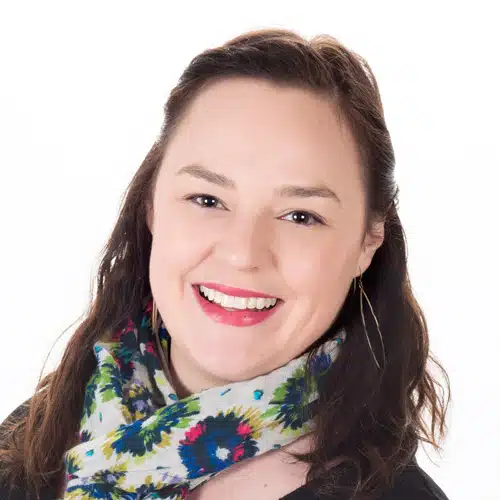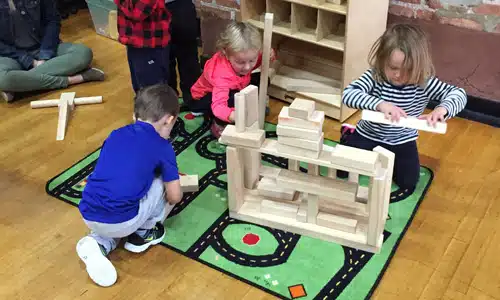The benefits of block play for young children are almost infinite. Building with blocks builds valuable cognitive skills such as problem solving, communication, perspective taking, representing and reasoning. This is why you’ll find age appropriate building materials in each and every one of our classrooms at Bubbles Academy! From the squishy cubes in Open Play, to the magna-tiles in the Garden Room, to the foam blocks in the Ocean Room, to the wooden blocks in the Preschool classrooms opportunities to explore with blocks abound at the Bub-Hub.
As a preschool teacher I am constantly on the lookout for authentic, child-led discoveries that open the doors for growing mathematic skills. 99% of the time, I find these discoveries happen in the block area. Children become engineers, physicists, architects, and effective members of a team naturally, and confidently while building with blocks. And it’s not just four and five year olds that can experience this kind of learning. Starting in toddlerhood, all children progress through six stages of exploration in block play.
Stage 1: Discovering
Very young children move, touch, carry, pile, and knock down blocks as they are focused on sensorimotor development. This might be when your little one loves to knock down towers that you build together!
Stage 2: Repetition
Next up is when your child may stack blocks vertically, or line them up horizontally. They may repeat the same patterns over and over until they figure out the next step in the block play progression.
Stage 3: Bridges
As your child gets older, they find that placing two blocks apart from each other with a third block on top makes a bridge! Exploring balance using different widths of blocks is an important mathematical concept at this stage.
Stage 4: Enclosures
This is the beginning stage of dramatic play with blocks. Now, your child creates walls for a house for a doll, fences for an animal, or a garage for their toy cars. Measuring and spatial awareness are key concepts here.
Stage 5: Patterns
Sorting, matching, and creating symmetry develop as your child builds elaborate designs, patterns or decorations.
Stage 6: Pretending
Planning, and symbolic thinking come together with all of the previous block skills almost magically as your little one begins to use their block play as a way to dramatize and understand the growing world around them.
For further inspiration check out one of my favorite books on children’s block play: Creative Block Play: A Comprehensive Guide to Learning through Building

Samantha Perry
Samantha Perry is the Director of Bubbles Academy’s Arts-Integrated Preschool Program. She is also the recipient of the Harris Foundation’s Scholarship for Excellence in Leadership and is currently pursuing a Master of Science in Child Development with a specialization in Administration at Erikson Institute. The Harris Excellence Scholarships are awarded annually to a select number of students with excellent academic credentials and a demonstrated commitment to the field of early childhood.
Sam is grateful for the opportunity to use both her theatrical expertise, and broad knowledge of needs of young children at Bubbles Academy’s arts-integrated preschool program. As an educator, Sam strives to inspire confidence, independence, curiosity and creativity in each of her students every day.
